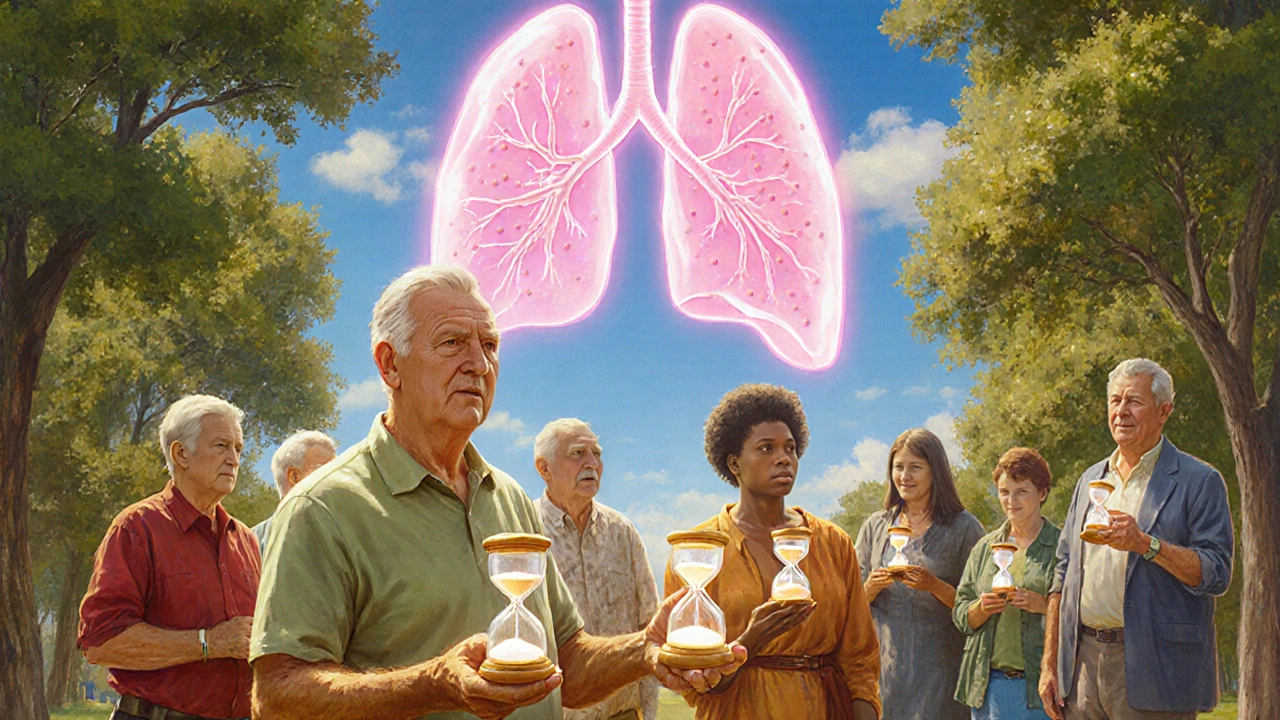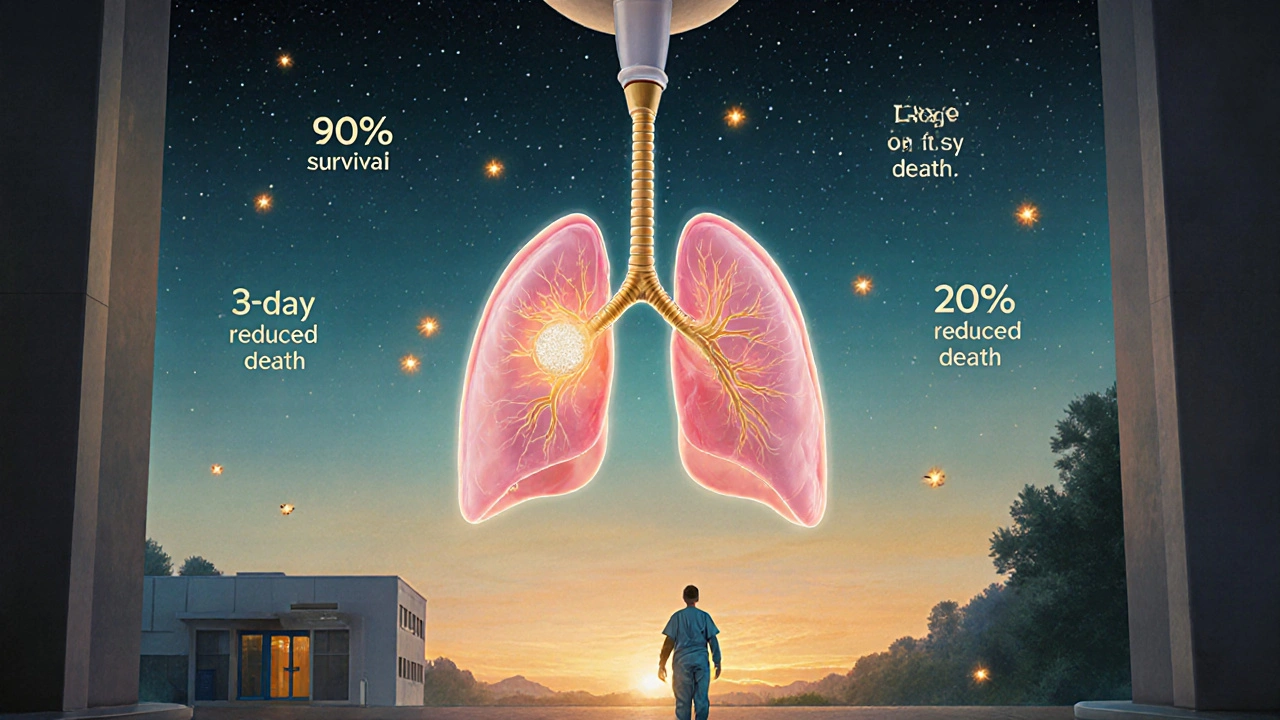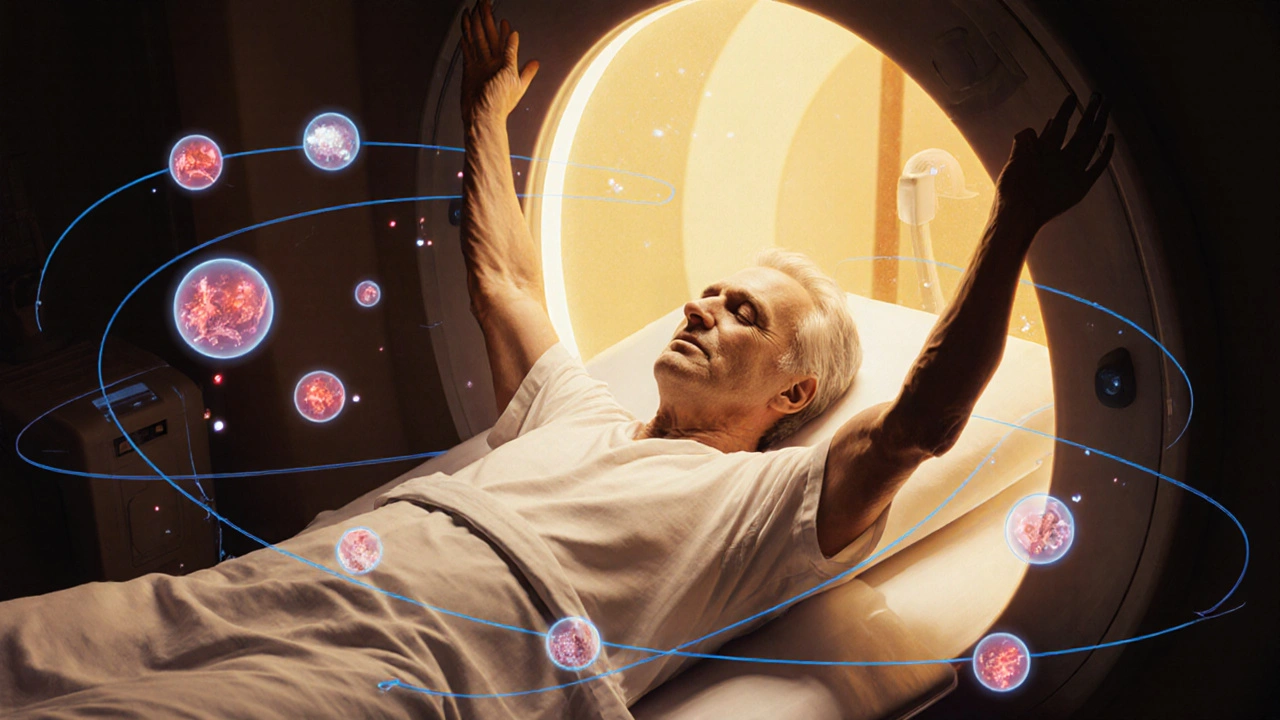What Is Low-Dose CT for Lung Screening?
Low-dose CT (LDCT) is a specialized type of CT scan designed to detect early signs of lung cancer in people at high risk. Unlike standard CT scans, it uses much less radiation-about one-tenth the dose-making it safe for annual use. The goal isn’t to find every tiny spot, but to catch tumors early, when they’re still small and treatable. Studies show that when done right, LDCT can cut lung cancer deaths by up to 20% in the right group of people.
Who Should Get Screened?
If you’re between 50 and 80 years old and have a history of heavy smoking, you’re likely eligible. The key numbers to remember: 20 pack-years and current or former smoker within the last 15 years.
A pack-year means smoking one pack a day for a year. So, if you smoked two packs a day for 10 years, that’s 20 pack-years. Or one pack a day for 20 years. It doesn’t matter how you got there-what matters is the total exposure.
The U.S. Preventive Services Task Force (USPSTF) updated its guidelines in 2021 to include people as young as 50, not just 55. That change alone opened screening to millions more. Medicare and most private insurers now cover LDCT for this group, with no out-of-pocket cost if your provider follows the rules.
But here’s the catch: if you quit smoking more than 15 years ago, you might still be at risk. Some experts, like Dr. Peter Bach from Memorial Sloan Kettering, argue that lung cancer risk doesn’t just disappear after 15 years. Data shows about one-third of lung cancers happen in people who quit over 15 years ago. The American Cancer Society and NCCN already allow screening past that cutoff if other risk factors are present-like family history, asbestos exposure, or a history of lung disease.
What Happens During the Scan?
The scan itself takes less than 10 seconds. You lie on a table, raise your arms, and hold your breath while the machine spins around you. No needles, no fasting, no prep. You don’t even need to change clothes unless your shirt has metal zippers or buttons.
The machine uses just 0.8 to 1.2 millisieverts (mSv) of radiation-about the same as a round-trip flight from Sydney to Melbourne. For comparison, a regular chest CT uses 5-7 mSv. That’s why it’s called low-dose.
The images are taken in thin slices (under 1.5 mm) and processed with special software to highlight small nodules. Accredited centers must meet strict standards set by the American College of Radiology. They use AI tools to help radiologists spot abnormalities faster and with fewer errors. One study showed AI cut reading time by 30% without missing a single cancer.

What Do the Results Mean?
Most scans come back normal. But if something shows up-a small nodule-it doesn’t mean you have cancer. In fact, over 96% of positive findings turn out to be harmless.
Nodules are classified by size:
- Less than 4 mm: Almost always benign. No follow-up needed.
- 4-6 mm: Watchful waiting. A repeat scan in 6 months.
- 6-8 mm: Follow-up at 3-6 months, sometimes with a PET scan.
- Over 8 mm: Likely needs biopsy or surgical removal.
At Massachusetts General Hospital, 68% of patients with positive screens needed more tests. The average wait time was 47 days. The anxiety during that time is real. One patient from Ohio said she spent weeks terrified, only to find out it was scar tissue from an old infection.
But here’s the flip side: Mary Johnson, 58, from Ohio, had a 6mm nodule found on her LDCT. It was Stage 1 adenocarcinoma. She had surgery. She’s cancer-free now. That’s the power of early detection.
False Positives and Anxiety
False positives are the biggest emotional hurdle. The NLST trial found that 24% of people had a positive result on their first scan. By the third year, that dropped to 10.5%. But even one false alarm can trigger months of worry, extra tests, and costs.
A 2023 survey found 42% of screened patients felt anxious during follow-up. Some spent hundreds of dollars on additional imaging. James Wilson from Texas paid $450 out of pocket for follow-up scans before being told it was nothing.
That’s why shared decision-making is required before your first scan. Your doctor must sit down with you, explain the risks and benefits, and make sure you understand what a positive result could mean. It’s not just a test-it’s a life-changing conversation.
What Happens If Cancer Is Found?
If LDCT finds a cancer, it’s usually caught at Stage I-when it’s still contained in the lung. That’s huge. In the NLST, 71% of cancers found by LDCT were Stage I, compared to just 49% in people who got chest X-rays.
Most Stage I lung cancers can be removed with minimally invasive surgery-video-assisted thoracoscopic surgery (VATS). Recovery is faster: hospital stays dropped from over 5 days to just 3. Complication rates are under 1%. Survival rates for Stage I are over 90% after surgery.
That’s why experts say LDCT isn’t just a scan-it’s a lifeline. For every 810 people screened annually over 6.5 years, one life is saved.

Why Isn’t Everyone Getting Screened?
Despite the proven benefits, only about 23% of eligible Americans are getting screened. That’s a massive gap.
Barriers are real. In rural areas, the average distance to a screening center is 32 miles. Many people don’t have transportation. Others don’t know they qualify. Black Americans have higher lung cancer rates but are screened at 28% lower rates than White Americans.
Medicaid expansion helped. States that expanded Medicaid saw screening rates 37% higher than states that didn’t. Policy matters.
And then there’s the fear factor. A 2023 survey found 63% of people who didn’t get screened said they were afraid of false positives. They don’t realize that the chance of missing a cancer is far riskier than the chance of a false alarm.
What’s Next for Lung Screening?
The future is getting smarter. New tools are emerging:
- AI-powered analysis: Already in use at major hospitals, helping radiologists spot tiny changes faster.
- Dual-energy CT: Reduces false positives by 18% by better distinguishing between benign and malignant nodules.
- Blood tests: The EarlyCDT-Lung test, now in trials, can rule out cancer with 94% accuracy if negative.
- Risk models: New tools like LYFS-CT use smoking history, age, and other factors to predict who benefits most-potentially improving efficiency by 27%.
The CMS is currently reviewing whether to remove the 15-year quit limit entirely. If they do, an extra 12,000 lives could be saved each year. That’s the equivalent of filling 150 school buses with people who wouldn’t otherwise be here.
Bottom Line
If you’re 50 to 80, have smoked at least 20 pack-years, and either still smoke or quit within the last 15 years-you qualify. Talk to your doctor. Get screened. The scan is quick, safe, and free under most insurance plans. The worst-case scenario? You get a clean bill of health and peace of mind. The best-case scenario? You catch cancer early, before it spreads, and you live.
Don’t wait for symptoms. Lung cancer rarely causes signs until it’s advanced. By then, it’s too late. LDCT is the only tool proven to save lives in this group. If you’re eligible, don’t ignore it. Your lungs are counting on you.


Sammy Williams
November 21, 2025 AT 14:40Simone Wood
November 23, 2025 AT 08:53Swati Jain
November 23, 2025 AT 15:27Donald Frantz
November 24, 2025 AT 11:54jim cerqua
November 24, 2025 AT 23:47David Cusack
November 26, 2025 AT 19:06Willie Doherty
November 27, 2025 AT 07:10Elaina Cronin
November 29, 2025 AT 06:56Darragh McNulty
December 1, 2025 AT 03:52Florian Moser
December 2, 2025 AT 21:40